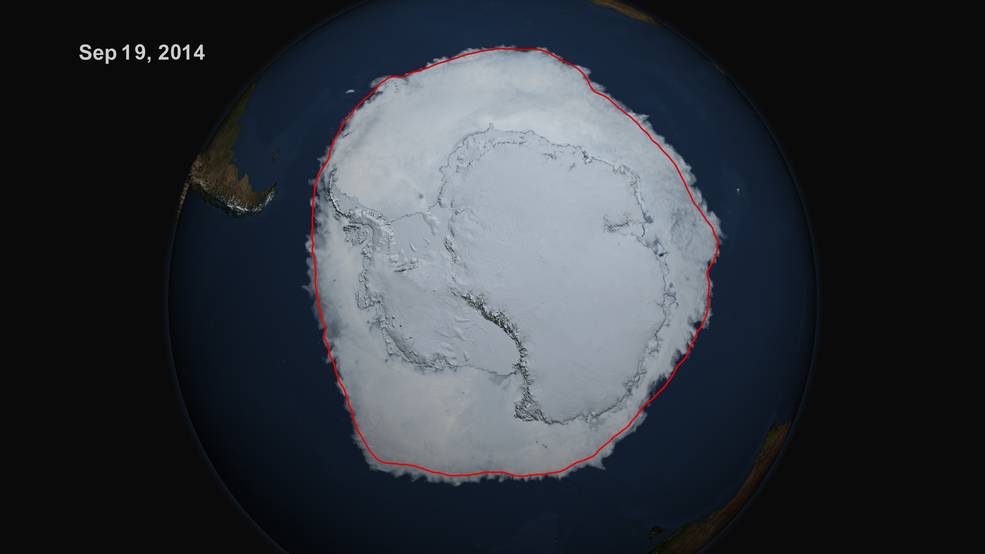Antarctic sea ice levels reached a record low in February – the middle of the summer in the southern hemisphere. The receding ice coverage will have significant implications for global rising sea levels.
Though it is normal for sea ice around the continent to melt in summer (when it shrinks to about one-fifth of its winter coverage of roughly three times the area of Australia), there has never been less ice around the continent than this February. The size was calculated by comparing this year to observations carried out over 45 years by satellite. The finding was reported by the EU's climate observatory Copernicus on Wednesday.
"These low sea ice conditions may have important implications for the stability of Antarctic ice shelves and ultimately for the rise of global sea levels," said Samantha Burgess, Deputy Director of Copernicus Climate Change Observatory (C3S). "Polar ice caps are a sensitive indicator of the climate crisis," she added.
Melting sea ice does not directly raise sea levels, but the knock-on effects can. For example, sea ice helps support floating ice shelves, thick freshwater glaciers that cover Antarctica and hold back land-based ice sheets. Just one of these contains enough water to cause catastrophic sea level rise if it melts.
The white ice pack also reflects more of the sun's rays than the darker ocean, thereby lowering global warming. This is the eighth consecutive year that the ice pack has melted more than the average February minimum.
Confirming other observations
The Antarctic ice pack for the whole of February 2023 covered an area 34% lower than the monthly average, breaking the previous record of February 2017. The daily sea ice levels also reached an all-time minimum.
The American reference observatory also made similar findings and the National Snow and Ice Data Centre (NSIDC) announced that it had measured record minimum extents of Antarctic sea ice in February.
Over the 45 years that satellites have been making observations, an average of 42,300 square kilometres ice cover (2.8%) is lost each year.

Credits: NASA's Scientific Visualisation Studio/Cindy Starr
"Since 1979, 1.86 million square kilometres of ice cover has been lost in February. This is equivalent to about five times the size of Germany."
Related News
- Glaciers could disappear worldwide by end of the century
- 'Humanity is dedicated to its own destruction' – Noam Chomsky
The Australian Antarctic Program Partnership (AAPP) also found the area of sea ice around the Antarctic continent to be the lowest since satellite measurements began. AAPP researchers noted an even greater need for "increased monitoring of the entire sea-ice environment."
"Understanding the changes underway and their impacts on the global system are essential in this critical decade for climate action," said AAPP Programme Leader, Professor Nathan Bindoff.

